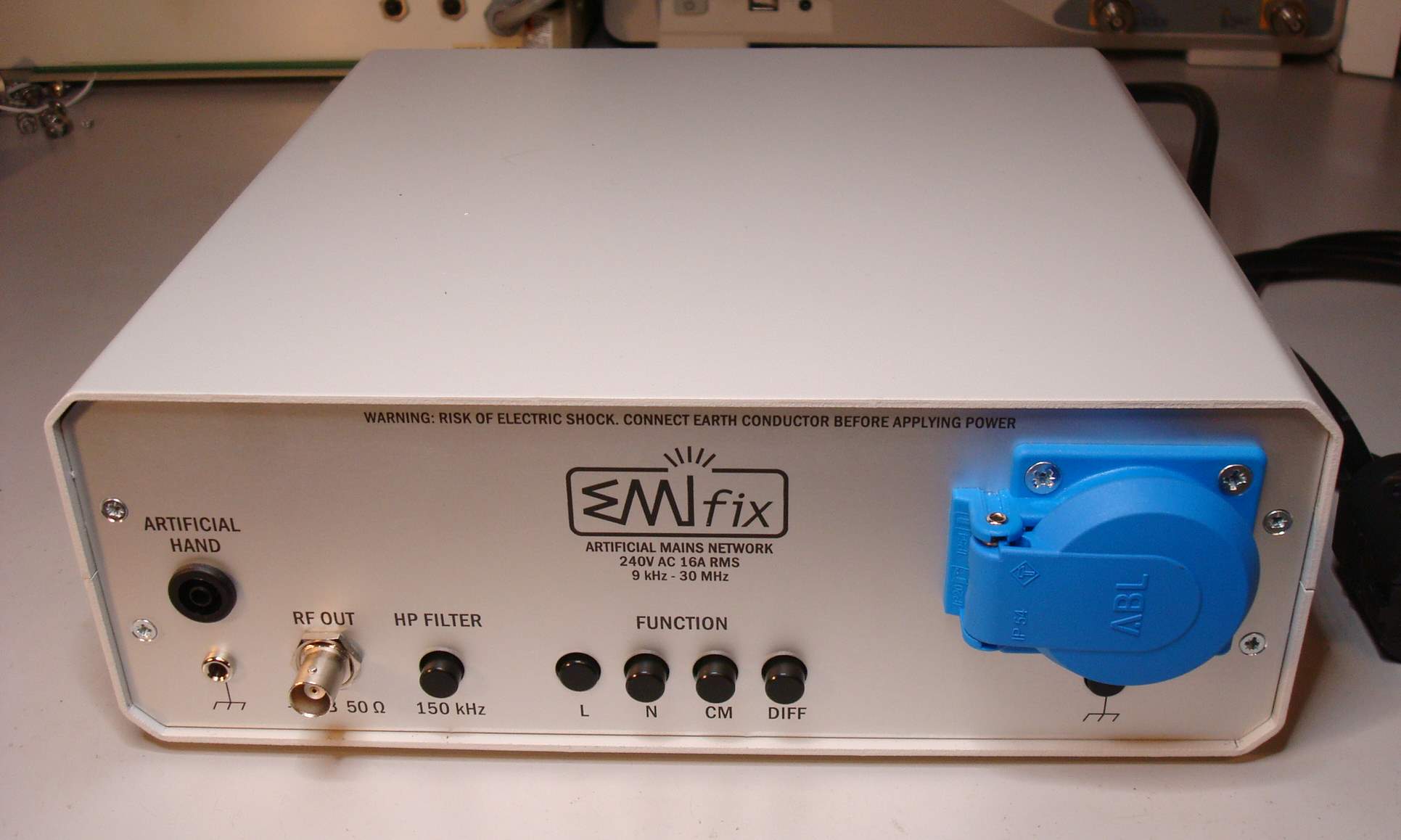Runo's Power Design
New diagnostic tool for the laboratory and the EMC test room:
A LISN which can separate noise in its
'Common Mode' and 'Differential Mode' parts
 |
Why do you need this LISN?
Modern electrical devices often emit high frequency electromagnetic noise which can cause disturbance of other equipment, this is called ElectroMagnetic Interference (EMI). To measure noise conducted on wires a "Line Impedance Stabilization Network" (LISN), also called an "Artificial Mains Network" is often used. A LISN is inserted between the supply mains and the device under test. It must extract the noise emitted from the device on its two supply wires Line (L) and Neutral (N) and direct it to an EMI receiver or a spectrum analyzer. Moreover, it must constitute a high frequency impedance of 50W on both L and N as described in CISPR16.
In the
development laboratory it is important to be able to separate and see the
noise in its common mode (CM) part and its differential mode (DIFF) part
respectively. This ability
has no relevance at an approval test, but for the SMPS designer it is
indispensable since the origins of CM and DIFF noise and the useful
methods to mitigate them are completely different.
It was always a mystery to me why I cannot buy a LISN which enables me
to investigate CM and DIFF noise.
Therefore I developed EMIfix, a new LISN with two extra pushbuttons: CM and DIFF. It is a 16 Ampere two-line "V-network" according to the instructions in CISPR16. It can be used in the laboratory during product development as well as in the EMC test room. Further description can be found in the user manual and in this article: "EMIfix - an artificial mains network for the laboratory".
I am now starting production and sale of this LISN.
runo.nielsen@tdcadsl.dk